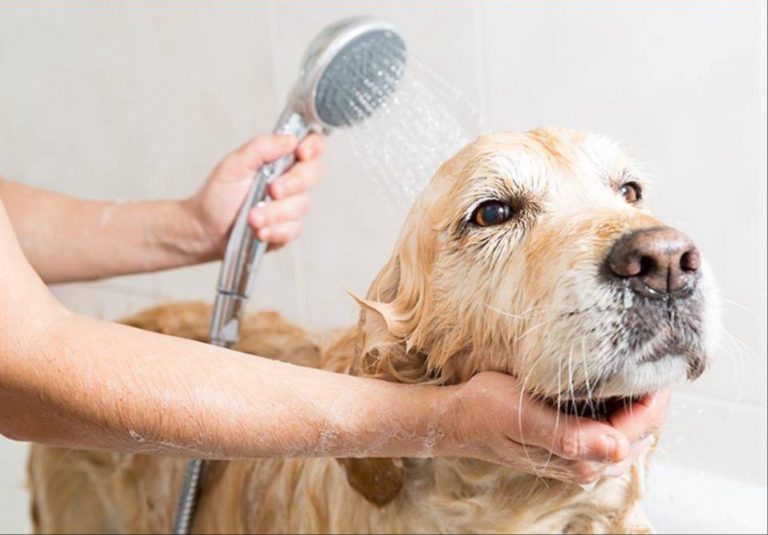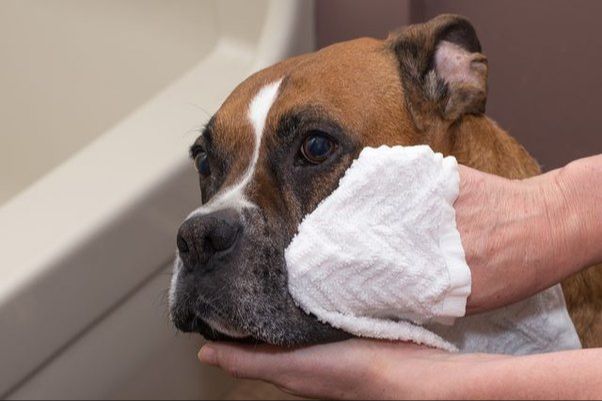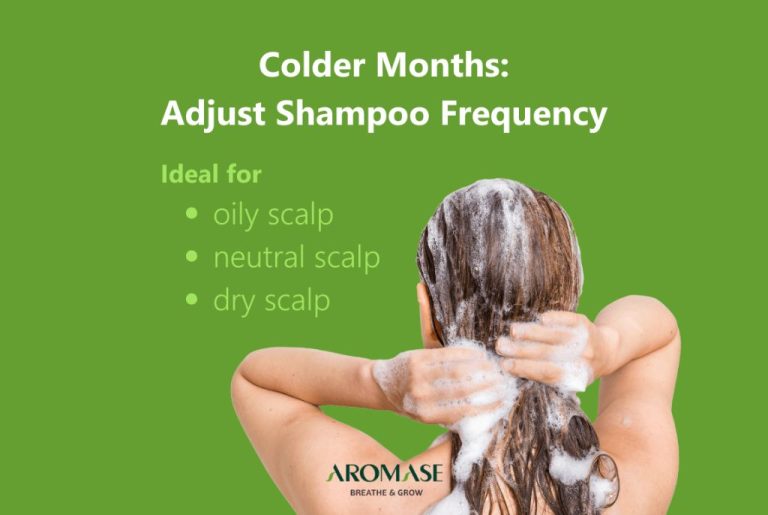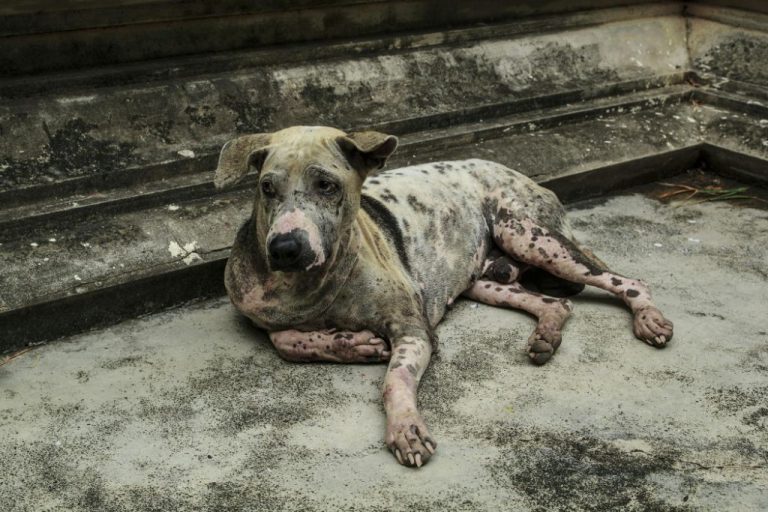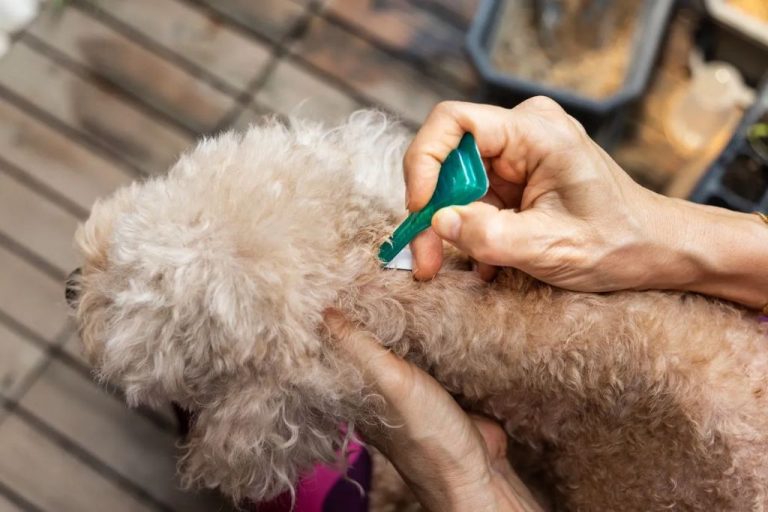Trimming Your Dog’S Hair: Tips For A Professional-Looking Cut
Keeping your dog’s coat trimmed and well-groomed provides many benefits for both you and your pup. Regular trimming keeps the hair from getting matted and tangled, prevents issues like skin irritation, and allows you to spot any abnormalities like lumps or bumps. Proper grooming also supports your dog’s health by improving blood circulation and removing dirt and debris from the coat.
This guide will provide tips on how to trim your dog’s hair at home to achieve a professional-looking finish. We’ll go over the tools you need, how to prepare your dog for grooming, techniques for trimming the face, body, legs and sanitary areas, and finishing touches. Maintaining your dog’s coat between grooms will also be covered, along with guidance on when it’s best to seek help from a professional groomer.
With some preparation and practice, you can keep your dog looking neat and tidy in between visits to the groomer. Let’s get started!
Gather the Right Tools
Trimming your dog’s hair requires having the proper tools on hand. The main tools you’ll need are:
Clippers
Invest in a high-quality pair of clippers designed specifically for dogs. Andis and Wahl make professional-grade clippers like the Wahl Motion Lithium Ion Cordless Clipper that are powerful enough to trim thick coats. Make sure the blades are sharp to avoid irritation.
Scissors
Scissor types like thinning shears and curved shears will allow you to trim the coat to the right length and texture. Choose sharp, stainless steel shears designed for pet grooming like Master Grooming Tools Stiletto Straight Shears.
Combs/Brushes
Slicker brushes and combs help remove mats and loose hair before and during the trim. Use gentle combs like the Safari De-Matting Comb to work through tangles without scraping the skin.
Styptic Powder
Styptic powder like QuikStop Styptic Powder helps stop bleeding if you accidentally nick your dog’s skin.
Prepare Your Dog
Before giving your dog a haircut, it’s important to make sure their coat is clean, mat-free, and dry. Start by giving your dog a bath using a mild puppy shampoo and warm water. Be sure to thoroughly rinse out all the shampoo to avoid skin irritation. After bathing, towel dry your dog’s coat to absorb excess moisture. Then, use a blow dryer on a low setting to fully dry the fur. Take your time with this step, as any moisture left in the coat can impact how the haircuts.
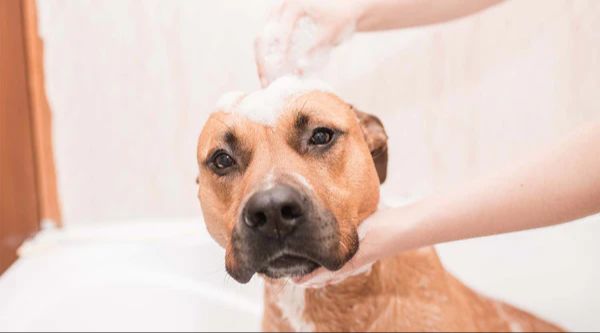
Once dry, use a slicker brush and metal comb to brush out any mats or tangles in your dog’s fur. Work in small sections and hold the fur taught as you gently brush from the skin outward. For severely matted fur, you may need to carefully snip out the mats with grooming scissors before brushing. Regular brushing and combing keeps their coat free of painful mats and allows you to get a smooth, even trim. According to Barkbus, preparing your dog with proper bathing, drying, and brushing out is key for a “stress-free grooming experience” (source).
With your dog’s coat clean, dry, and mat-free, you’re ready to move on to the cutting and trimming process. Taking the time to properly prepare the coat will make the haircut look smooth and professional.
Face and Head
Trimming the hair on your dog’s face and head requires extra care and attention. Start by gathering the fur under your dog’s chin and gently guiding their nose to turn their face for easier access (1). Use a pair of straight grooming shears and carefully trim the hair under the chin in short strokes. Be cautious not to trim too close if your dog has long whiskers.
Next, trim the hair around the eyes. Carefully pull down small sections of hair around the eyes and snip little by little with rounded tip scissors. Stop frequently to check if both eyes are evenly trimmed. Avoid cutting the eyelashes. For the muzzle, comb the hair downwards and trim against the grain. Work slowly and patiently to avoid nicks and cuts.
When trimming the ears, gently extend one ear at a time and trim the excess hair around the edges and inside the canal. Be very careful not to cut the skin of the ears. Always trim a small amount at a time until the ears have the desired tidy look.
Take your time when grooming the face and head. It often helps to have a second person available to help hold and reassure your dog through the process. Work carefully to avoid clipping the delicate skin and give your dog lots of praise and treats. With patience and the proper tools, you can achieve a neatly trimmed face at home.
Body
To trim the body of your dog, follow these steps for an efficient and professional-looking cut:
- Brush your dog’s coat thoroughly before trimming, especially around the neck, chest, and belly to lift the hair and ensure an even cut.
- Trim against the direction of hair growth starting under the neck and moving down the body. Go slow and avoid cutting the hair too short.
- Use long, straight strokes evenly across the coat. Make sure your clippers stay flat to the body contour.
- For the belly area, hold the clippers vertically and trim against the growth direction. Take extra care here as the skin is delicate.
- Blend the longer coat on the shoulders, hips and thighs into the trimmed body. Trim over these areas lightly to taper the line.
- Check for any uneven spots and touch up. Brush again over the coat to remove loose hair.
Keeping the clipper flat and trimming against the hair growth direction will help achieve an even, smooth look on the body. Go slowly and check as you go to avoid over-cutting. Leave at least 1 inch of coat on the body for a tidy, natural look.
Legs
The legs require careful trimming, especially around the paws and nails. Use thinning shears or clippers to trim excess fur around the legs, taking care not to clip too close. For the paws, trim neatly around the edges to create a rounded shape, being sure not to nick the skin (source). Lift each paw up to access the fur pads underneath and trim any long hairs. This helps keep your dog’s feet clean.
Trimming the fur between the paw pads is also important for traction and preventing matting (source). Use clippers or rounded tip scissors to carefully trim the hair around and between the pads. Go slowly and avoid cutting the pads.
Finally, trim the nails so they don’t click or snag on surfaces. If unsure, have a vet or groomer clip the nails to avoid hitting the quick. Short nails keep your dog comfortable.
Sanitary Area
A sanitary trim focuses on trimming the hair around your dog’s tail and anus area to keep it clean and hygienic. This area can easily collect feces, urine, and debris if the hair grows too long [1]. Begin by having your dog lie down on their side to access their belly and private areas more easily. Use clippers to trim the fur around the anus in a circle, removing several inches of hair so the area is exposed. Be very careful not to nick their skin in this sensitive region. You can also use scissors for finer snipping if needed. Additionally, trim the fur on the underside of their tail to prevent feces from clinging to the hair. Leave around an inch of hair rather than shaving it bare. A sanitary trim allows your dog to stay clean and reduces odors. It’s an important part of their hygiene routine.
Finishing Touches
Once you’ve trimmed your dog’s hair all over, it’s time for some finishing touches to even everything out and tidy hard-to-reach spots. Use thinning shears or small, fine scissors to carefully trim any uneven tufts or slightly longer hairs. Be very careful around sensitive areas like the eyes, ears, nose, and sanitary region.
You can use a grooming finishing spray to help smooth the coat and bring out shine and softness. Apply the spray lightly all over the body while brushing against the direction of hair growth. This will also help remove any loose hairs. Pay extra attention to the legs, belly, chest, and rear end. The finishing spray seals and protects the hair after grooming.
Maintaining the Coat
After giving your dog a professional-looking trim at home, you’ll need to maintain their coat properly between grooming sessions. The frequency of maintenance required depends on your dog’s coat type. Dogs with long or fluffy coats need more frequent brushing and combing to prevent mats and tangles from forming. Short-haired dogs may only require weekly brushing. Here are some tips for keeping your dog’s coat looking its best:
Brush and comb your dog’s coat thoroughly 1-3 times per week, more often for long-haired dogs. Make sure to get down to the skin and remove all dirt, debris, loose hair and mats. Use a slicker brush for removing tangles, and a bristle brush to distribute oils and polish the coat.[1] Avoid brushing a dry coat, as this can damage the hair. Mist with a conditioning spray first.
Bathe your dog as needed, every 3-6 weeks for most dogs. Use a mild dog shampoo and thoroughly rinse out all traces of shampoo to avoid dry, itchy skin. Dry thoroughly with a towel and finish with a blow dryer on low heat.[2] Never let your dog air dry.
Check your dog’s skin whenever grooming. Look for any signs of irritation, dryness, parasites or infection. Use a dog-friendly moisturizing cream or spray if the skin seems dry. Seek veterinary advice for any skin issues.
Schedule professional grooming every 4-8 weeks to trim nails, clean ears, trim overgrown hair, and give baths. Professional grooming can take care of more thorough maintenance needs.
When to Seek a Professional
While regular at-home grooming can keep your dog looking tidy, there are some situations when it’s best to seek professional help:
Difficult breeds like Poodles, Shih Tzus, Bichon Frises, and Schnauzers require more frequent professional grooming, as their coats grow quickly and require specialized cuts and styling. These breeds often need professional grooming every 4-6 weeks (Source).
As dogs age, it can become more challenging for owners to thoroughly groom thick coats or reach all areas. Senior dogs with limited mobility may find it stressful to be groomed at home. Seeking professional help ensures they receive a thorough grooming in a safe, controlled environment (Source).
Severely matted dogs require shaving and close clipping to remove the mats without hurting the dog. Professional groomers have the proper tools and experience to safely de-mat dogs and prevent the painful skin issues matting can cause.

